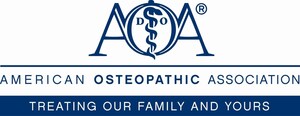CHICAGO, Sept. 26, 2016 /PRNewswire-USNewswire/ -- Riding a moderate-intensity roller coaster can facilitate passage of small kidney stones, according to a report published today in The Journal of the American Osteopathic Association that attempts to corroborate patients' accounts of spontaneously passing kidney stones after riding a specific Disney World roller coaster.
The foundational study was designed to validate the effectiveness of a 3D printed model kidney used in the research, led by a Michigan State University College of Osteopathic Medicine professor of urology. Dr. David D. Wartinger, currently professor emeritus, initiated the study when a series of patients reported passing kidney stones after riding the Big Thunder Mountain Railroad roller coaster at Walt Disney World in Orlando. In one case, a patient said he passed one kidney stone after each of three consecutive rides on the roller coaster.
Dr. Wartinger and co-author Marc A Mitchell, DO, used 3D printing to create a clear silicone anatomical model of that patient's kidney. The model was filled with urine and three kidney stones of differing sizes, which researchers used to evaluate the roller coaster effect. The purpose of this initial study was to validate the effectiveness of the model and support the case for further research.
"Preliminary study findings support the anecdotal evidence that a ride on a moderate-intensity roller coaster could benefit some patients with small kidney stones," Dr. Wartinger said. "Passing a kidney stone before it reaches an obstructive size can prevent surgeries and emergency room visits. Roller coaster riding after treatments like lithotripsy and before planned pregnancies may prevent stone enlargement and the complications of ureteral obstruction."
More than 300,000 patients in the United States seek emergency care for kidney stones each year, with the costs of treating kidney stones estimated at $2.1 billion. Approximately 11 percent of men and six percent of women will experience a kidney stone in their lifetime.
"The osteopathic philosophy of medicine emphasizes prevention and the body's natural ability to heal. What could be more osteopathic than finding a relatively low-cost, non-invasive treatment that could prevent suffering for hundreds of thousands of patients? " Dr. Wartinger said.
Methods and Results
The model held three actual kidney stones of various sizes positioned in the upper, middle or lower passageways of the kidney. The researchers, who had permission from the park, kept the kidney model concealed in a backpack during 20 rides on the Big Thunder Mountain Railroad roller coaster at Walt Disney World in Orlando. Researchers then analyzed those 60 ride outcomes to determine how the variables of kidney stone volume, location in the kidney and model position in the front versus rear of the roller coaster impacted kidney stone passage.
Independent of kidney stone volume and location, findings showed sitting in the back of the roller coaster resulted in a passage rate of 63.89 percent. Front seat rides resulted in a passage rate of 16.67 percent. For more detailed information on the study outcomes, consult the full study here.
Researchers also performed the experiment on Space Mountain and the Walt Disney World railroad before concluding the Big Thunder Mountain Railroad could be used to study stone passage.
About The Journal of the American Osteopathic Association
The Journal of the American Osteopathic Association (JAOA) is the official scientific publication of the American Osteopathic Association. Edited by Robert Orenstein, DO, it is the premier scholarly peer-reviewed publication of the osteopathic medical profession. The JAOA's mission is to advance medicine through the publication of peer-reviewed osteopathic research.
Logo - http://photos.prnewswire.com/prnh/20150716/237742LOGO
SOURCE American Osteopathic Association
WANT YOUR COMPANY'S NEWS FEATURED ON PRNEWSWIRE.COM?
Newsrooms &
Influencers
Digital Media
Outlets
Journalists
Opted In






Share this article